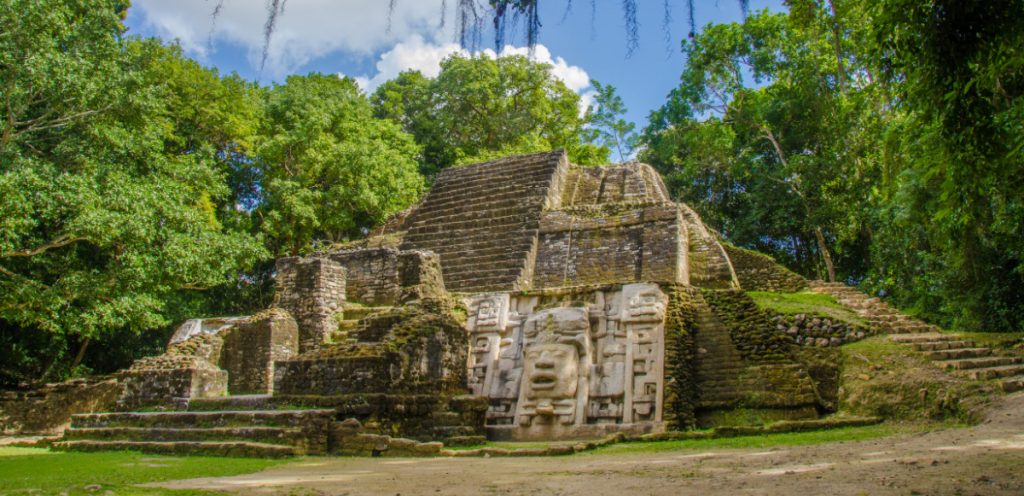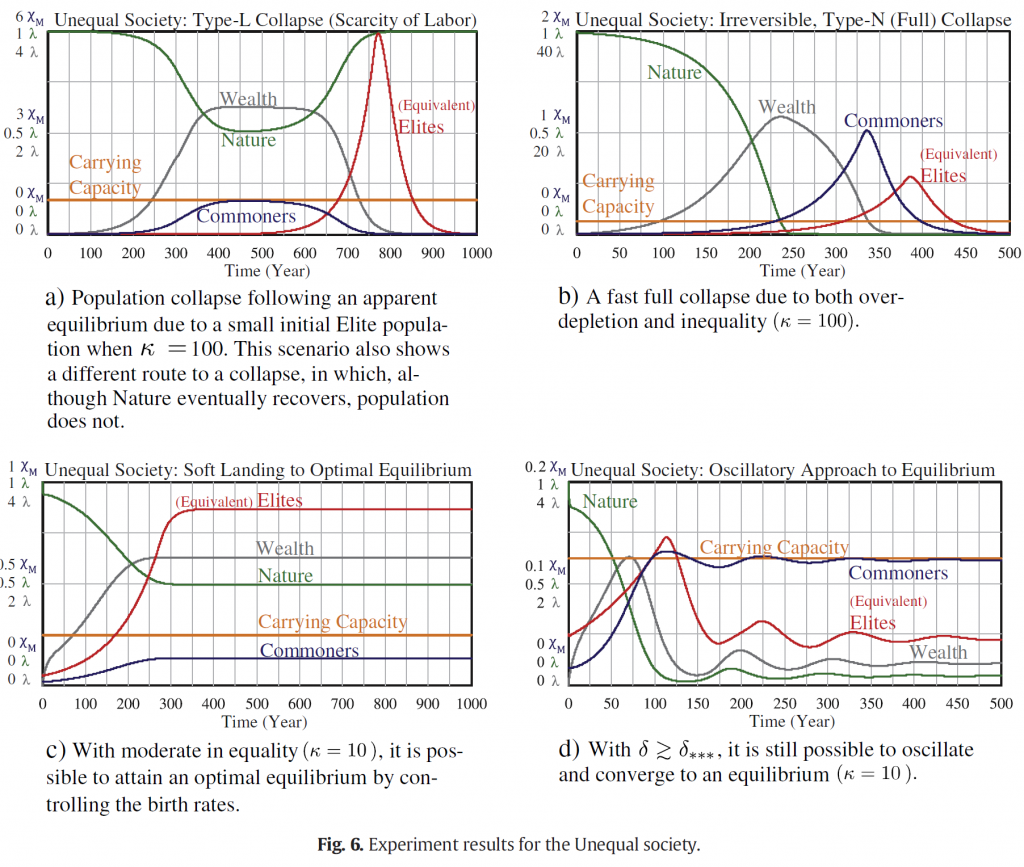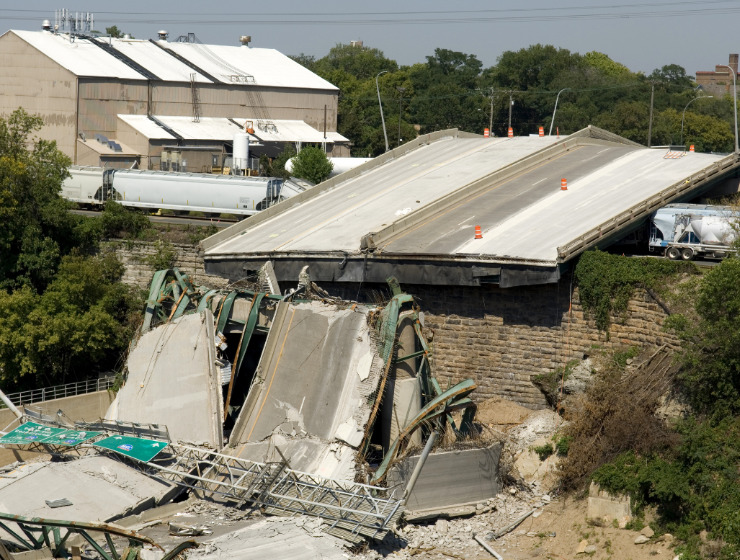The Current Collapse Has No Clear Endpoint

Collapse of human civilisations is nothing new and has happened many times in the past. The collapse of the Roman Empire is probably the most-cited example, but another noteworthy collapse in Europe was the Minoans on Crete and the Mycenaeans on mainland Greece around 1200BC. Similar historic collapses have now been documented across the globe, in Mesopotamia, in Egypt, in Anatolia, in India, China and South America.
Turchin and Nefedov contended and presented evidence in 2009 that civilisations undergo “secular cycles, demographic–social–political oscillations of a very long period (centuries long) [that] are the rule, rather than an exception in the large agrarian states and empires.”. Each such collapse of civilisation implies a reduction in socio-economic complexity and in population. It goes hand-in-hand with a loss of knowledge and information, including the loss of trade skills and techniques (we don’t really know how the Egyptians built the pyramids).
This means that the default assumption should be that our current industrial civilisation will undergo a collapse as well. It is completely dependent on non-renewable resources (oil, gas, coal, minerals). If you are depleting non-renewable resources, you are digging your own grave. Only economists believe in infinite substitution of resources, but their profession demands that you ignore physics and reality to get published.
Obviously when it comes to the collapse trajectory, the starting point in terms of complexity matters a lot. We buy the ability to create complex technology, supply chains and social systems from using energy sources other than biofuel. Oil has the highest energy density of any energy source other than nuclear power (which does not scale down well to car/truck/train size and uranium/plutonium are highly toxic, so will never be put in the hands of ‘ordinary’ people).
That means when it comes to predicting the current collapse, the loss of oil as the dominant energy sources is actually more important than climate change or loss of biodiversity. Climate change will increase demand for energy, due to capital destruction by extreme weather events (flood, fire, storms) and hence accelerate the collapse. Biodiversity loss has less predictable consequences in the near term but will most likely impact food production the most (fishing, pollination of crops).
Interestingly the degree of inequality at the beginning of the collapse scenario also has a big impact on what trajectories are the most likely. Motesharrei and colleagues modelled a number of such scenarios in 2012 and found that in unequal societies, collapse is very difficult to avoid. They also found that there are two types of collapse – due to the loss of workers (such as the Mayan collapse and the 17th century collapse) or due to the loss of ‘nature’ (their term for all natural resources).

Their model assumes that nature is renewable, but that does not apply to fossil fuels. A large component of the natural resources and accumulated capital (wealth in the image above) are completely dependent on fossil fuels and oil in particular. That means we are most likely heading for scenario (b) in the picture, a fast full collapse due to over-depletion. The time scales in the images are highly dependent on how the model parameters are chosen, it is best to look at the shapes and relative positions of the curves only.
What the model tells us is that decline is likely very steep and fast. It also tells us that the ‘commoner’ population will start declining before the ‘elites’, but once the accumulated capital has been used up the game is over for the elites as well.
We should not read into these graphs that humans will go extinct, we can adapt to very low levels of natural resources (humans have successfully survived in harsh environments in Australia for 60,000 years). What is likely though is that very little of our current technology will survive.
The most complex technologies that require the most energy will likely disappear first – bye bye iphones, streaming services, cryptocurrencies and social media. What is much more significant than no longer staring at screens is that we will lose industrial agriculture and mining. Both are impossible without diesel, battery powered tractors and combine harvesters are too heavy, they compact the soil too much.

Mining is already hugely energy intensive as ore quality has declined massively due to depletion of the most viable deposits. Moving to hydrogen or battery powered dump trucks maybe possible but will further increase costs. Battery powered excavators may not even be possible. If mining production falls, we can no longer maintain our accumulated capital. Decay will be an early sign of collapse and that is already happening – think about the ever-present lack of maintenance of roads, bridges, water/sewage pipes, transmission networks etc. The less energy there is available, the faster the rate of decay. We are already using 15% of global oil production to produce that very oil. This ratio is going to get worse, fast.
To change the trajectory of collapse, the single most important policy change is to dramatically reduce elite consumption. If we could achieve that, we would have more options in steering the ultimate outcome. Of course, that is also the least likely scenario, there is literally no historical precedent for the elites making such a sacrifice for the greater good.
When confronted with collapse elites double down on maintaining their status and excess consumption, thus accelerating the collapse and making it worse. Only once the commoner population has declined by 30-50% do they admit the game is up. Of course, our current overlords hope to avoid even that tipping point by getting the robots to do the dirty work. It is not going to happen, but the tantalising prospect means that they will not be amenable to any change until it is too late.
Our work is entirely reader-supported, so if you enjoyed this article please consider sharing it around, following us on Twitter or LinkedIn, or throwing some money into our tip jar on Paypal. Everything we publish is open access. Finding the time to do the research and writing is helped by the goodwill of people who are also looking for real answers to what is happening. The best way to make sure you don’t miss the articles we publish is to subscribe to the mailing list at our website.

Peter Lanius is a physicist by training who has worked in IT, Telecoms and as an executive coach across many industries. He believes in collapsing early to avoid the rush and lives on a 20acre property in regional Australia.





